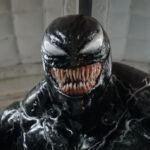Growing up, certain movies leave an indelible mark on your imagination. For many, Labyrinth, with its captivating blend of fantasy, music, and the unforgettable David Bowie as the Goblin King, is one of those films. Introduced to this 1986 gem by a babysitter, two sisters, like countless others, were instantly drawn into its enchanting and slightly eerie world. Years later, revisiting Labyrinth sparks a nostalgic and insightful conversation about its enduring appeal, the magic of Bowie’s performance, and the film’s iconic dance sequences.
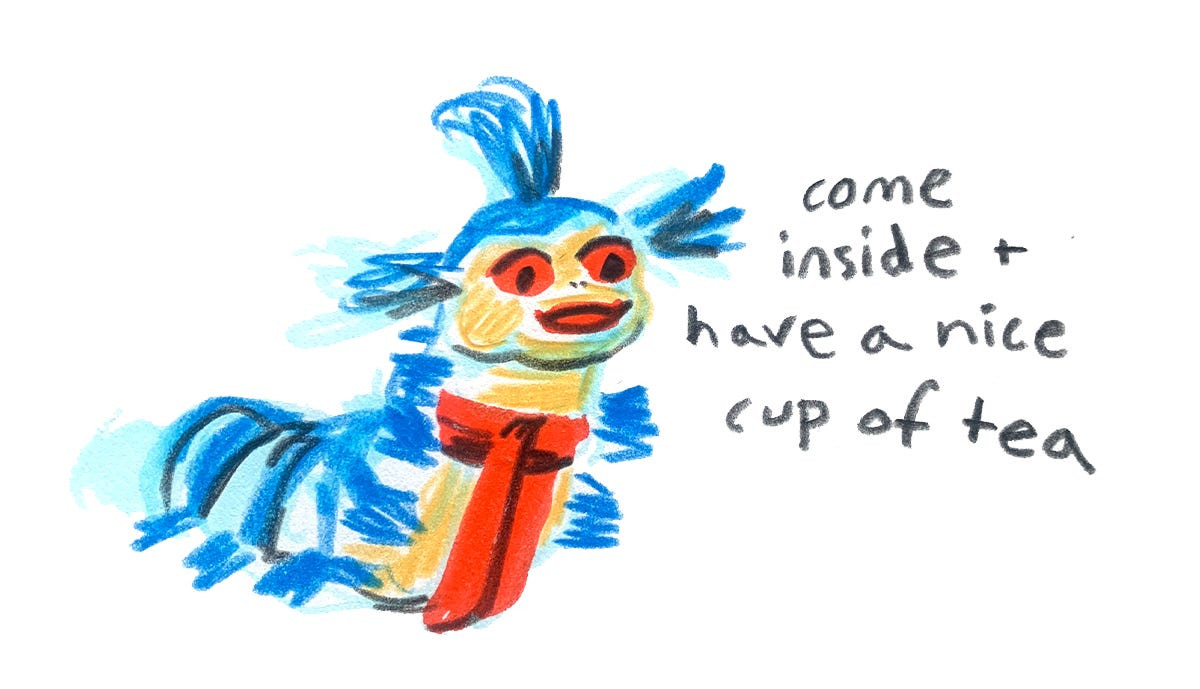 Imogen from Norway introduces Labyrinth: Two sisters' first encounter with Goblin King Jareth, sparking a lifelong fascination with Bowie's magical world.
Imogen from Norway introduces Labyrinth: Two sisters' first encounter with Goblin King Jareth, sparking a lifelong fascination with Bowie's magical world.
Recently, a conversation between two sisters delved deep into the labyrinthine layers of this beloved movie. After re-watching Labyrinth, they unpacked their thoughts, from Bowie’s mesmerizing Goblin King to the film’s surprising fashion and underlying themes. Their discussion reveals why Labyrinth continues to enchant audiences, highlighting the magic woven into its dance sequences, Bowie’s iconic role, and the film’s unique place in fantasy cinema.
 divider
divider
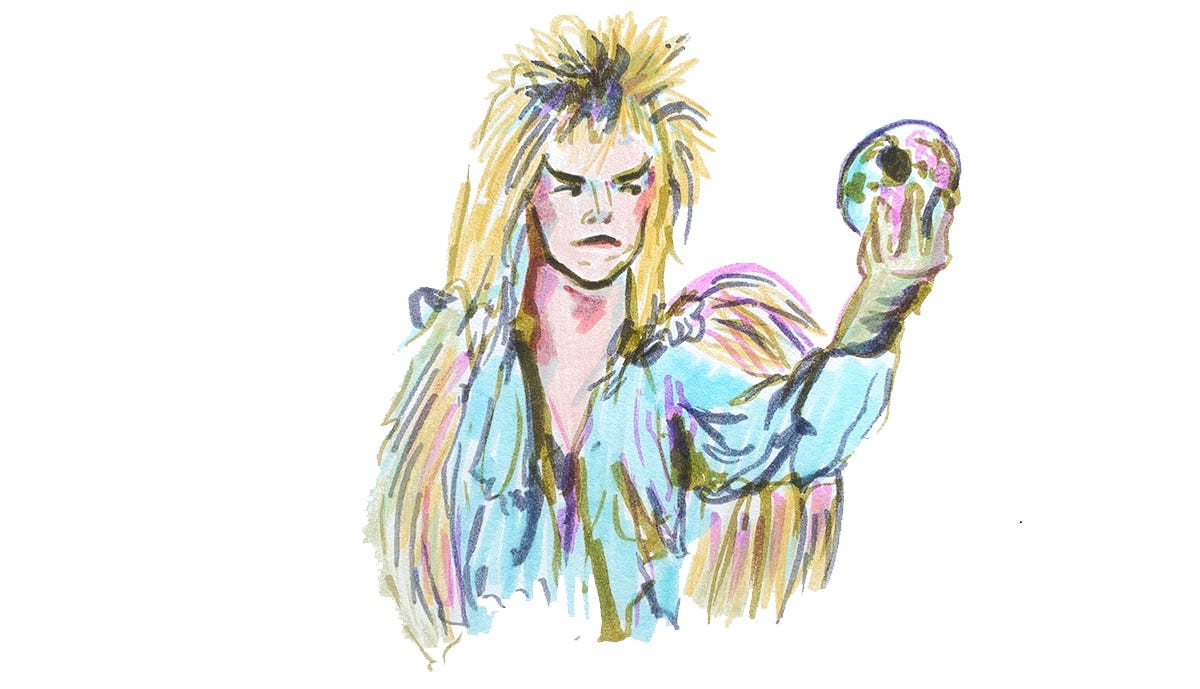 Sarah in her mansion: Cosplaying in a mansion reveals the character's privileged background, adding depth to her fantastical journey in Labyrinth.
Sarah in her mansion: Cosplaying in a mansion reveals the character's privileged background, adding depth to her fantastical journey in Labyrinth.
The conversation kicked off with initial impressions, quickly moving into a detailed exploration of Labyrinth‘s nuances. One sister’s notes ranged from detailed observations about “yellow and gray eyeshadow with a yellow lip” in Bowie’s final scene to broader points about character motivations and set design. This meticulous attention to detail mirrors the film’s rich tapestry, encouraging viewers to look beyond the surface magic and appreciate the artistry within.
Enter the Goblin King: Jareth’s Dramatic Arrival
The dramatic entrance of David Bowie as Jareth, the Goblin King, remains one of cinema’s most iconic introductions. From his billowing sleeves to his commanding presence, Jareth embodies a mythical, eccentric figure. The sisters noted the almost immediate acceptance of Jareth’s presence by Sarah, the protagonist. There’s no lengthy “Who are you?” scene, but rather a recognition, “ah yes, Jareth.” This immediate immersion into the fantastical world sets the tone for the entire film.
The sisters pondered Jareth’s motivations, viewing him as a lonely figure yearning for human connection. His dramatic speeches and grand gestures, while seemingly menacing, might mask a deeper desire for interaction and perhaps even affection. This interpretation adds a layer of complexity to the Goblin King, moving beyond a simple villainous portrayal to a more nuanced character driven by loneliness. The humor in Jareth’s situation – a powerful king surrounded by goblins who don’t appreciate his jokes – further humanizes him, making him both formidable and surprisingly relatable. This blend of power and vulnerability is central to Bowie’s captivating performance.
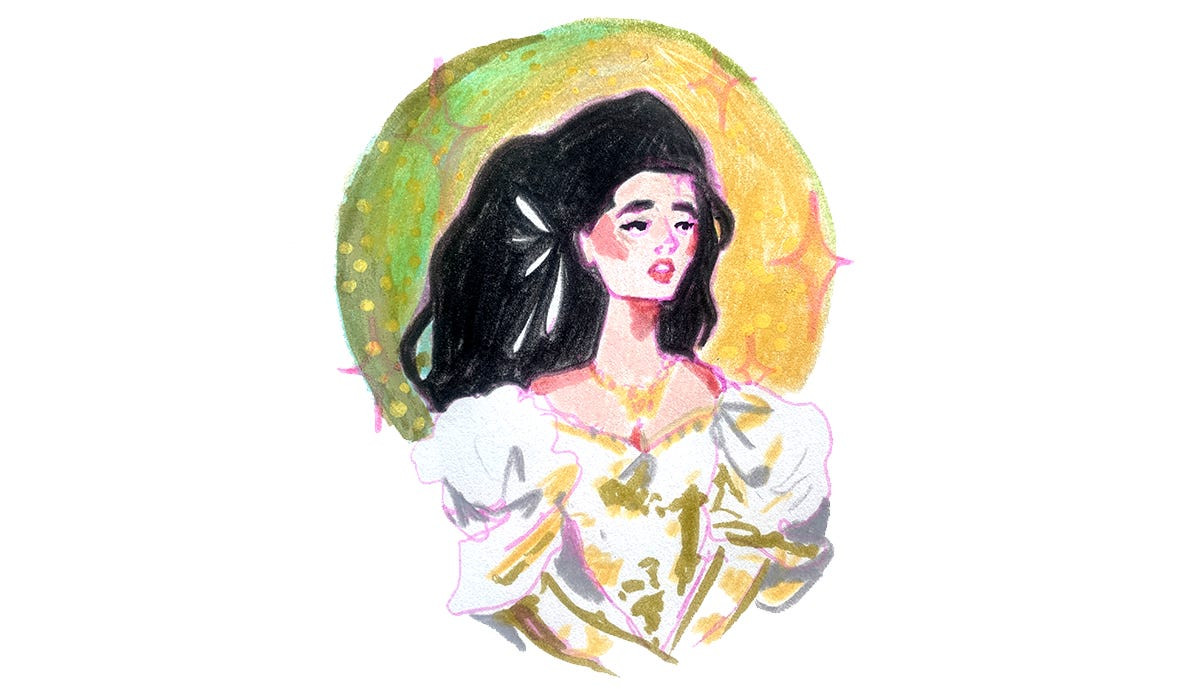 David Bowie as Jareth: The Goblin King's dramatic entrance, a masterclass in costume and performance, solidifies his iconic status in Labyrinth.
David Bowie as Jareth: The Goblin King's dramatic entrance, a masterclass in costume and performance, solidifies his iconic status in Labyrinth.
The Iconic Ballroom Dress: A Mother Dress of Fantasy Cinema
The discussion naturally flowed to Sarah’s unforgettable ballroom gown sequence. This scene, set to Bowie’s song “As The World Falls Down,” is a visual and auditory feast, deeply embedding itself in the cultural consciousness. The dress itself is elevated to “mother dress” status, alongside other iconic gowns from films like Pirates of the Caribbean and Anastasia. These dresses represent more than just costumes; they embody a sense of fantasy, romance, and transformative moments within their respective narratives.
Sarah’s entire wardrobe in Labyrinth receives high praise, described as inspiring a desire for “poet sleeves and waistcoats for everyone.” The film’s fashion, much like its music and set design, contributes significantly to its lasting appeal, influencing aesthetics for years to come. The ballroom scene, in particular, is a testament to the film’s visual storytelling, where the dress, the dance, and Bowie’s performance converge to create a truly magical moment.
Glitter and the Goblin World: The Magic is in the Details
A seemingly minor detail, the pervasive glitter in Labyrinth, became a point of fascination. Initially mistaken for rain-induced glistening, the glitter is recognized as a deliberate design choice, perhaps even a subtle hint of Jareth’s omnipresence. The glitter on cobwebs, candles, and throughout the Goblin Kingdom suggests a world subtly infused with magic, almost as if it’s shedding from Jareth himself.
This observation highlights the meticulous set design and art direction of Labyrinth. The glitter isn’t just decoration; it’s part of the atmosphere, enhancing the otherworldly feel of the labyrinth and contributing to its unique visual identity. This attention to detail, from the grand ballroom to the smallest speck of glitter, showcases the film’s commitment to creating a fully realized fantasy world.
Crystals and Contact Juggling: The Illusion of Magic
The discussion moved to Jareth’s crystal ball, initially presented as a dream-revealing object. However, the sisters’ conversation veered into the practicalities behind the crystal’s manipulation. The realization that Bowie himself wasn’t performing the intricate contact juggling adds a touch of behind-the-scenes intrigue. This revelation doesn’t diminish the magic but rather highlights the collaborative effort in creating cinematic illusions.
The term “contact juggling” is introduced, adding a layer of appreciation for the skill involved, even if it wasn’t Bowie’s own. This segment playfully demystifies a magical element, reminding viewers of the artifice inherent in filmmaking while still celebrating the overall enchantment of Labyrinth.
“Magic Dance” and Scary Kids Movies: A Different Kind of Entertainment
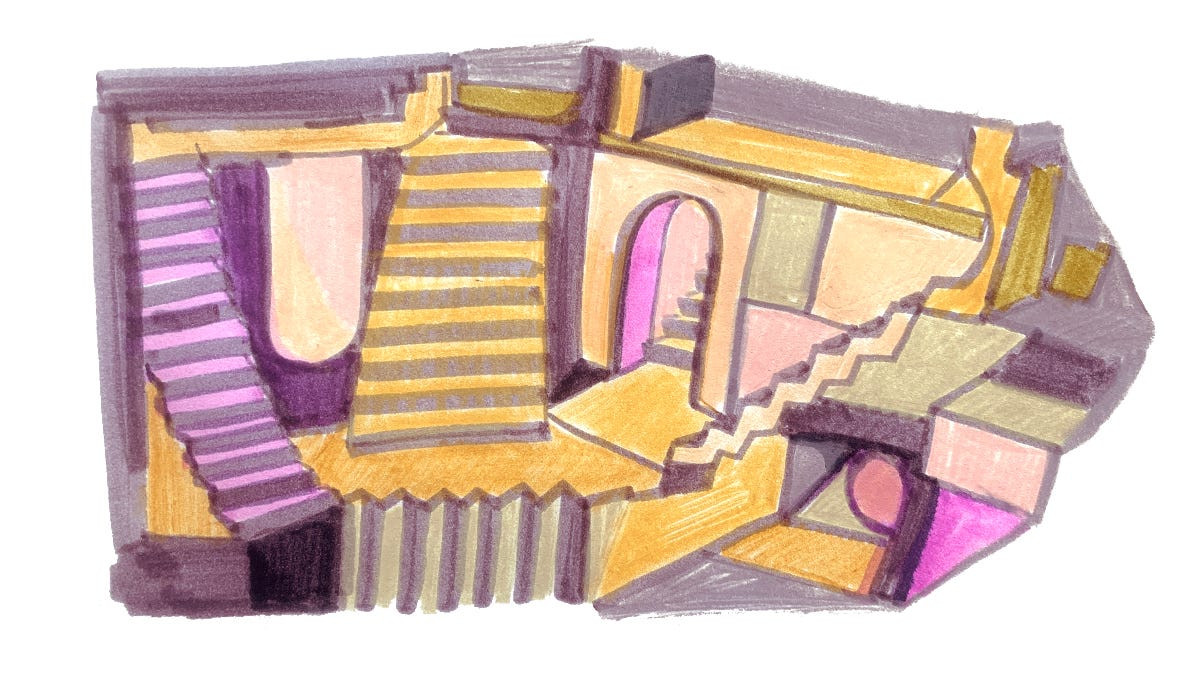 Magic Dance Scene: Goblins surround baby Toby in the iconic Magic Dance sequence, a memorable and slightly unsettling scene from Labyrinth.
Magic Dance Scene: Goblins surround baby Toby in the iconic Magic Dance sequence, a memorable and slightly unsettling scene from Labyrinth.
The iconic “Magic Dance” scene prompts a broader discussion about children’s movies and their approach to scariness. The sisters observe a potential shift away from genuinely scary kids’ films, contrasting Labyrinth with more contemporary, less unsettling content. They ponder the experience of the baby actor in the “Magic Dance” scene, surrounded by fantastical, and perhaps slightly frightening, goblin muppets. This scene, with Bowie’s energetic performance and the goblin chaos, is a perfect example of Labyrinth‘s ability to be both entertaining and slightly unsettling, a balance that contributes to its unique charm.
Films like Labyrinth and The NeverEnding Story are categorized as “Twilight in Fantasyland,” characterized by a sense of unease, surreal landscapes, and a protagonist navigating a world where logic doesn’t always apply. This genre, they argue, might be missing in modern children’s cinema, which often prioritizes straightforward narratives and less ambiguous tones. The discussion even touches upon the eerie, low-budget aesthetic reminiscent of early CD-ROM encyclopedias like Encarta ’95, further contextualizing the film’s visual style within a broader cultural landscape of slightly unsettling, yet captivating, imagery.
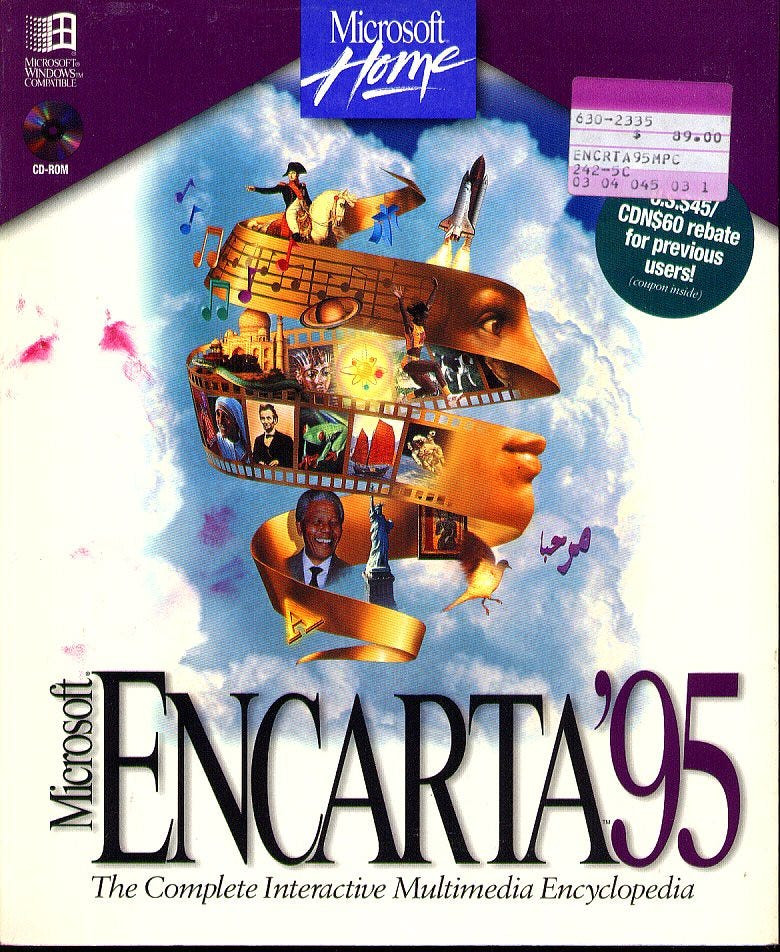 Encarta 95 Cover: The nostalgic and slightly eerie cover of Encarta '95 CD-ROM, evoking a similar atmosphere to the fantasy world of Labyrinth.
Encarta 95 Cover: The nostalgic and slightly eerie cover of Encarta '95 CD-ROM, evoking a similar atmosphere to the fantasy world of Labyrinth.
Rolling Rocks and Recasting Jareth: Humorous Detours
A humorous tangent about “big rolling rocks” in cinema emerges, sparked by the labyrinth’s perilous obstacles. This lighthearted interlude reflects the film’s own blend of adventure and whimsy. The conversation then playfully shifts to recasting Jareth for a hypothetical prequel. Brainstorming contemporary musicians, they consider (and quickly dismiss) some options before landing on Hozier and St. Vincent as intriguing possibilities. This playful casting exercise underscores the enduring fascination with the Goblin King character and Bowie’s indelible portrayal.
The Goblin King’s Loneliness and Lore: Unpacking Jareth’s Character
 divider
divider
The conversation returns to Jareth, delving into his potential backstory and motivations. The sisters theorize about his age, suggesting he could be thousands of years old, and contemplate the nature of goblins within his kingdom. Is he a lonely, ancient being, or a ruler of a thriving goblin court? The ballroom scene is reinterpreted as perhaps a figment of Jareth’s imagination, or a glimpse into a more vibrant past goblin society.
The idea that Jareth might be evolving into a goblin himself adds another layer of intrigue. This theory connects to fairy tale tropes of transformations and curses, suggesting a deeper lore behind the Goblin King and his realm. The sisters even playfully consider a Beauty and the Beast-esque scenario, where Sarah’s arrival could either break or accelerate Jareth’s transformation. This exploration of Jareth’s character, his potential loneliness, and his place within the goblin world, demonstrates the richness and depth that continues to fuel fan discussions about Labyrinth decades after its release.
Labyrinth remains a cinematic touchstone, not just for its groundbreaking visuals and Jim Henson’s creature work, but also for David Bowie’s iconic performance and the film’s unique blend of magic, music, and slightly unsettling fantasy. Revisiting it through a modern lens reveals layers of detail and thematic depth that continue to resonate with audiences today. The magic of Labyrinth, much like the magic of dance, lies in its ability to transport us to another world, even as we remain firmly rooted in our own appreciation for its artistry. The film’s enduring appeal ensures that the goblin king and his labyrinthine realm will continue to enchant and provoke conversation for generations to come.


